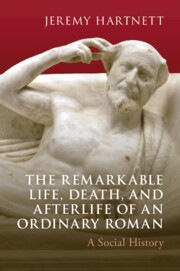2 results

The Remarkable Life, Death, and Afterlife of an Ordinary Roman
- A Social History
-
- Published online:
- 16 December 2024
- Print publication:
- 23 January 2025
3 - Price
-
- Book:
- Economics of Visual Art
- Published online:
- 23 July 2021
- Print publication:
- 12 August 2021, pp 77-101
-
- Chapter
- Export citation

